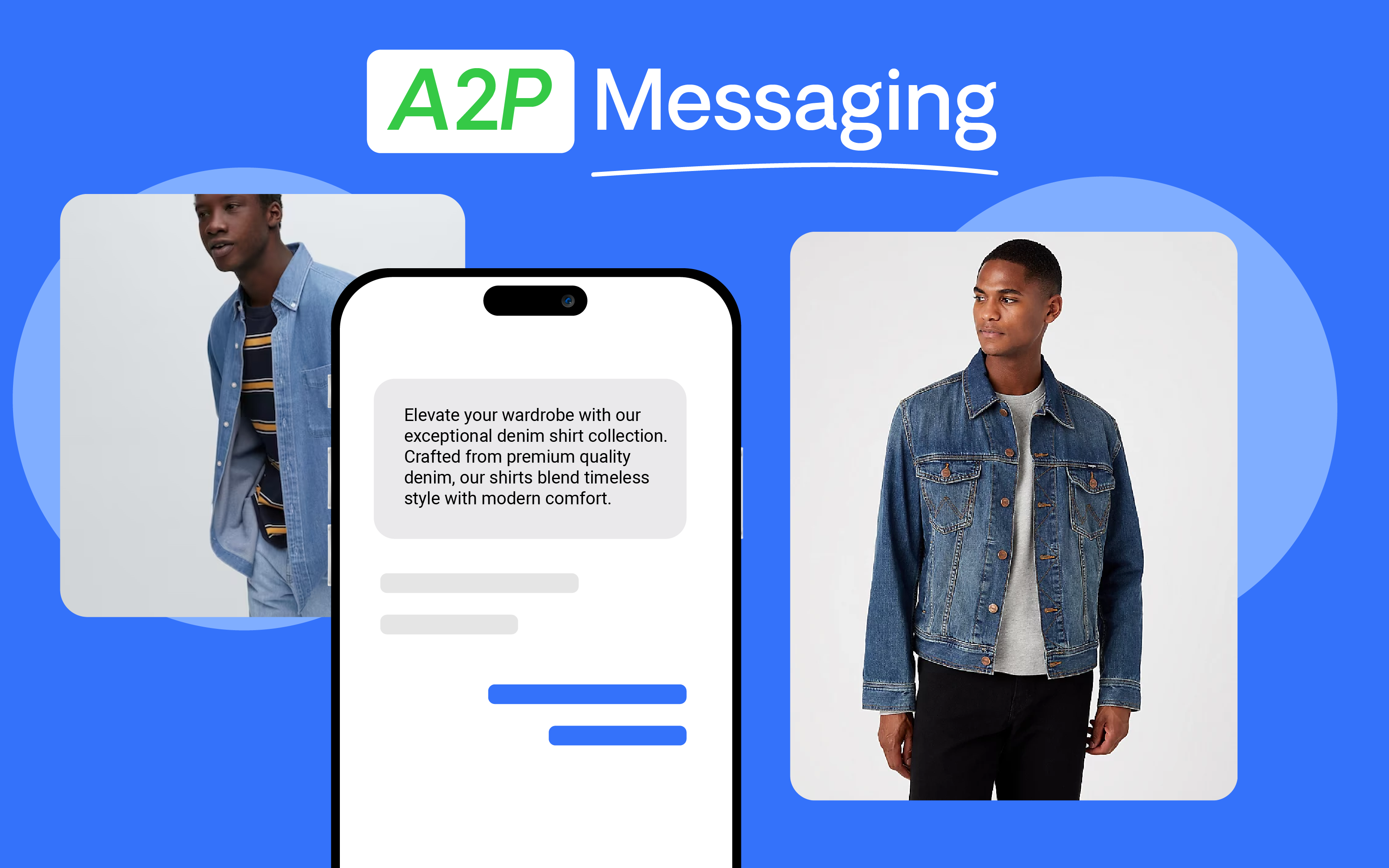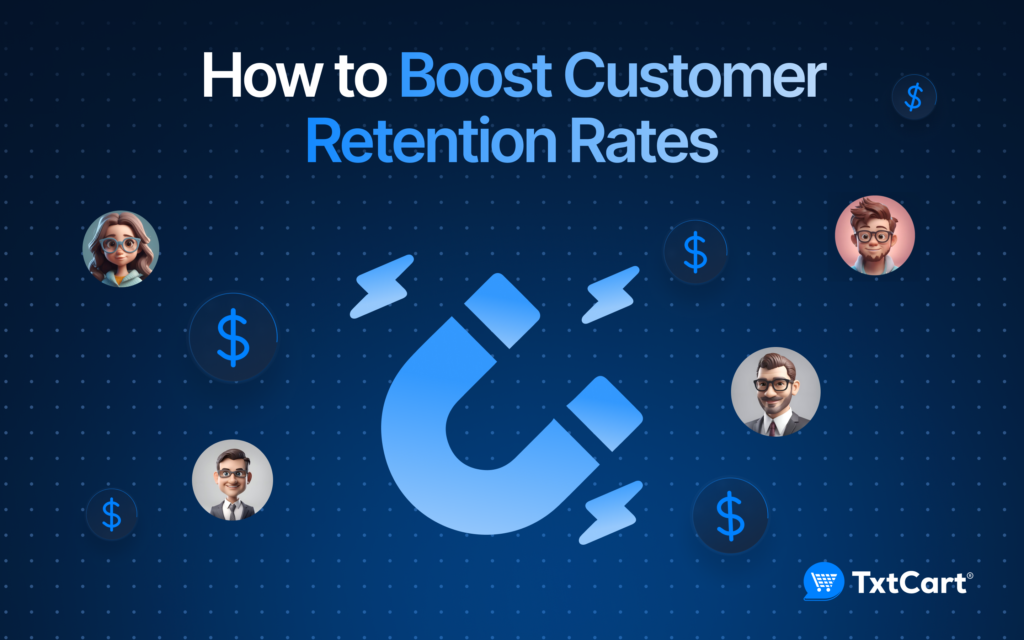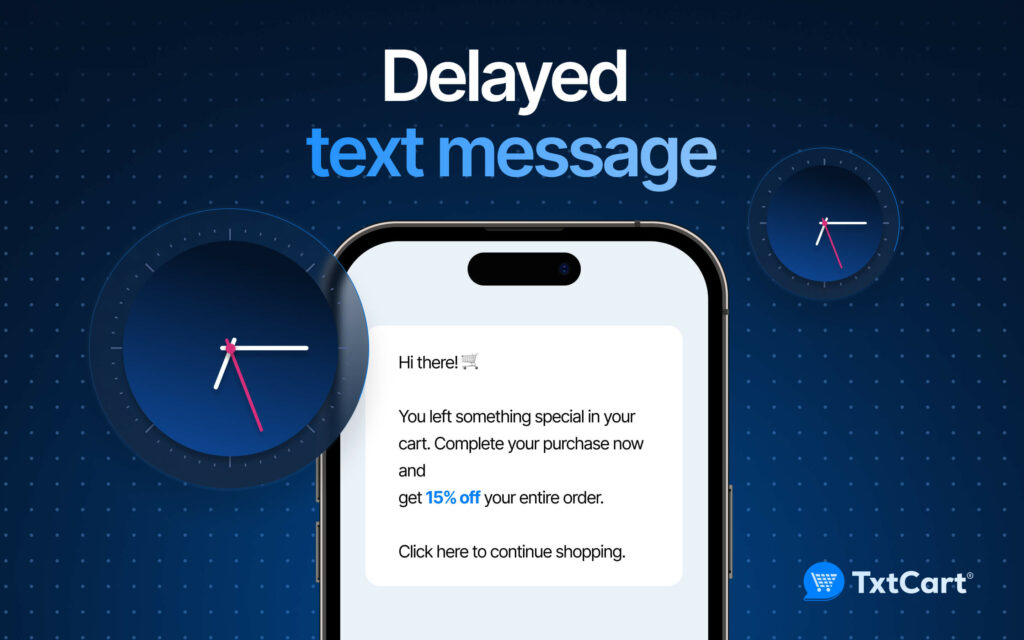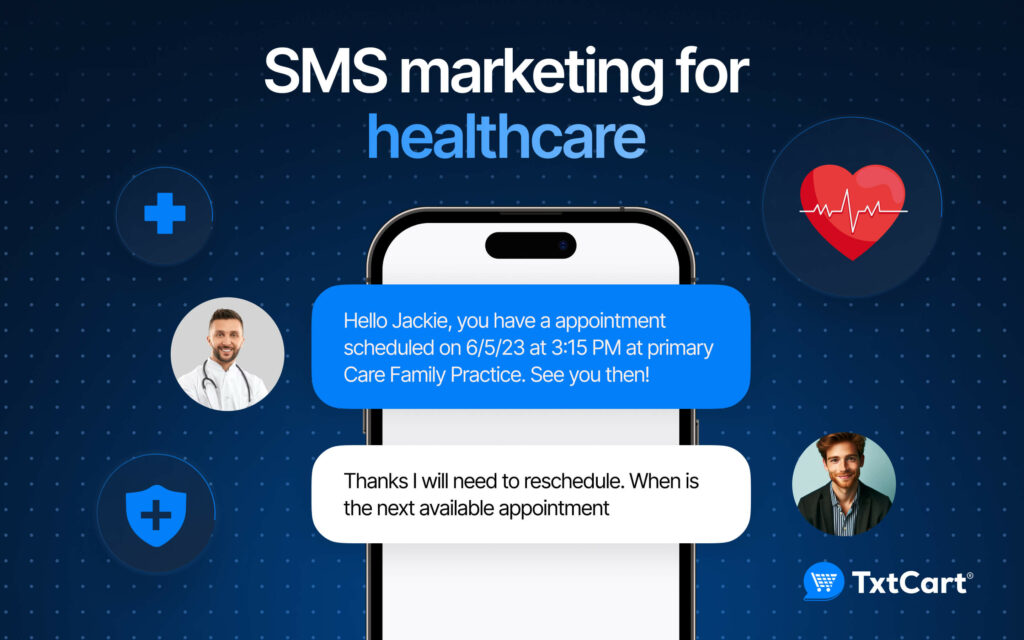In today’s digital landscape, message marketing has evolved into a necessity for businesses. In our blog, we delve into an essential term and strategy – A2P messaging. Learn the power and significance of A2P messaging in modern marketing and communication strategies.
What is A2P messaging?
A2P (Application-to-Person) messaging refers to the communication sent from an application to an individual. It’s a type of messaging that involves sending automated messages from software applications, systems, or servers to a person’s mobile device.
These messages are typically not generated by individuals but rather by automated systems or applications. A2P messaging is commonly used for various purposes, such as:
✔️Notifications: Updates from service providers (like banks, airlines, or service alerts).
✔️One-Time Passwords (OTPs): Sending secure codes for authentication purposes.
✔️ Marketing and Promotions: Bulk messages sent by businesses to promote their products or services.
✔️Appointment Reminders: Messages sent by healthcare providers, salons, or service-based industries to remind customers of their appointments.
A2P messaging often contrasts with P2P (Person-to-Person) messaging, where communication occurs directly between individuals using messaging apps or SMS.
This type of messaging has gained significant importance in various industries due to its efficiency, ease of use, and ability to reach a broad audience, making it a powerful tool for businesses to interact with their customers.
How does A2P messaging work?
A2P messaging in e-commerce is an effective way to keep customers informed, engage with them, and drive sales. The process of A2P messaging typically involves the following steps:
- Opt-in and permission: Customers often opt-in to receive messages from businesses during the checkout process, through subscription forms, or by sending a keyword to a dedicated shortcode. This opt-in can be explicit (where the user actively subscribes) or implicit (such as after a purchase).
- Message creation: Once the customer has subscribed or agreed to receive messages, the e-commerce platform generates relevant messages. These messages could include order confirmations, delivery updates, promotional offers, abandoned cart reminders, etc.
- Messaging platforms or APIs: E-commerce businesses typically use messaging platforms or APIs (Application Programming Interfaces) provided by SMS gateway providers or communication service providers. These platforms allow businesses to send bulk messages, customize content, and schedule delivery.
- Personalization and segmentation: Businesses often segment their audience based on preferences, behavior, or demographics to send personalized and targeted messages. This personalization can improve engagement and increase the effectiveness of the messages.
- Message delivery: The A2P messaging platform delivers the messages via various channels, most commonly SMS (Short Message Service), but also through other channels like MMS (Multimedia Messaging Service), messaging apps (WhatsApp, Facebook Messenger), or RCS (Rich Communication Services).
- Tracking and analytics: Businesses track the performance of their A2P messaging campaigns. They analyze delivery rates, open rates, click-through rates, and conversions to measure the success of their messaging strategy.
A2P messaging systems often utilize bulk messaging capabilities to send a large volume of messages efficiently. These messages can be personalized, scheduled, and managed according to the specific needs and requirements of the sending application or service.
A2P vs P2P messaging – the difference? Write in the table.
Here’s a table outlining the key differences between A2P (Application-to-Person) and P2P (Person-to-Person) messaging:
| Aspect | A2P messaging | P2P messaging |
| Message origin | Messages originate from applications, systems, or automated processes. | Messages originate from individuals and are sent directly from one person to another. |
| Message content | Often used for notifications, transactional alerts, marketing, authentication, and automated messages. | Conversational, personal, and typically includes direct communication between individuals. |
| Message volume | Can involve sending a large volume of messages to multiple recipients simultaneously. | Typically involves one-on-one or group conversations, often with fewer messages sent at a time. |
| Use cases | Business-to-customer communication, automated service alerts, marketing campaigns, and more. | Personal and informal communication, including text messaging and chat between friends, family, and colleagues. |
| Message formatting | Can include promotional content, structured data, and pre-defined templates. | Usually includes free-form text, emojis, multimedia content, and real-time conversations. |
| Sender identification | May use a shortcode, a brand name, or a service identifier as the sender. | Displays the sender’s phone number or a user’s identifier (e.g., username) in messaging apps. |
What are the benefits of A2P messaging?
Here are seven detailed benefits of A2P (Application-to-Person) messaging:
1. Efficient and automated communication
A2P messaging streamlines communication by automating the process of sending messages from applications or systems to individuals. It eliminates the need for manual intervention for each message, making it an efficient means of communication.
2. Wide reach and instant delivery:
A2P messaging allows for the instantaneous delivery of messages to a vast number of recipients. This rapid transmission ensures that time-sensitive information, notifications, or alerts reach the intended audience quickly, promoting swift action or response.
3. Enhanced customer engagement:
Messages sent through A2P channels often enjoy higher open and response rates. This leads to improved engagement with customers, fostering stronger relationships and potentially higher customer loyalty.
4. Cost-effective marketing and communication:
A2P messaging offers cost-effective marketing compared to traditional advertising channels. Businesses can reach a large audience without significant investments. This makes it an attractive option for promotional campaigns, updates, and notifications.
5. Customization and personalization:
A2P messaging allows for personalized content delivery based on user preferences, behavior, or location. Customized messages tend to resonate better with recipients, improving user experience and response rates.
6. Security and authentication:
A2P messaging is widely used for secure communication, such as delivering one-time passwords (OTPs) and verification codes for secure access to accounts and services. It plays a vital role in enhancing security measures and safeguarding sensitive information.
7. Analytical insights and tracking:
A2P platforms often provide analytical tools that allow businesses to track the performance of their messaging campaigns. Insights gathered from these analytics enable companies to refine their strategies, optimize content, and improve overall campaign effectiveness.
These advantages collectively make A2P messaging a powerful tool for businesses across various industries. Its ability to efficiently and effectively reach audiences, drive engagement, and provide secure communication makes it an integral part of modern communication strategies.
Types of A2P messaging
Application-to-Person (A2P) messaging refers to the communication sent from an application to an individual. There are various types of A2P messaging used across different industries and applications. Some common types include:
- Transactional Messages: These messages are sent to authenticate or confirm a transaction. Examples include one-time passwords (OTPs) for two-factor authentication, transaction notifications from banks, or order confirmations from e-commerce platforms.
- Promotional Messages: These are marketing or promotional messages sent to individuals for advertising purposes. They can include special offers, discounts, product promotions, or announcements.
- Alerts and Notifications: These messages provide important updates or alerts to users. They might include account alerts (e.g., balance updates), flight status notifications, appointment reminders, or emergency alerts (e.g., natural disasters, public safety alerts).
- Appointment Reminders: Often used in healthcare, fitness, or service-based industries, these messages remind individuals of scheduled appointments or bookings.
- Customer Service Communications: A2P messaging is used for customer support, allowing individuals to communicate with businesses for queries, support, or issue resolution.
- Opt-in/Subscription Messages: Messages that individuals have opted into or subscribed to, such as news alerts, updates, or newsletters from organizations.
- Surveys and Feedback Requests: A2P messaging is used to collect feedback or conduct surveys from users, customers, or subscribers.
- Interactive Messaging: These messages involve user interaction, allowing users to respond or take actions directly within the message, such as voting, providing feedback, or conducting transactions.
Each of these types serves different purposes and is used by various industries to communicate effectively with their audiences.
Uses cases of A2P messaging for Shopify
For e-commerce businesses, A2P messaging serves various essential functions, improving customer engagement, facilitating transactions, and enhancing overall user experience. Here are specific use cases:
- Order Confirmations and Updates: A2P messaging is used to send immediate order confirmations to customers after a purchase. Additionally, it keeps customers informed about the status of their orders, including updates on order processing, shipping, and delivery.
- Delivery Notifications: These messages provide real-time updates on package shipping, expected delivery times, and delivery confirmations. Customers are informed when the package is out for delivery or has been successfully delivered.
- Abandoned Cart Recovery: A2P messaging is an effective tool to re-engage customers who abandon their shopping carts. Businesses can send reminders via SMS to prompt customers to complete their purchases, often including personalized offers or discounts.
- Promotional Offers and Deals: E-commerce companies use A2P messaging to send promotional messages about special deals, seasonal sales, flash sales, and exclusive offers, driving traffic to their websites and encouraging sales.
- Customer Support and Feedback: A2P messaging allows for efficient customer service by enabling customers to make inquiries, resolve issues, or provide feedback via text messages. It provides a direct and convenient channel for communication.
- Product Restock Alerts: When a product is out of stock, businesses can allow customers to opt-in for restock alerts. A2P messaging informs customers when the item is available again, promoting further purchases.
- Personalized Recommendations: Utilizing customer purchase history and preferences, e-commerce businesses can send personalized product recommendations or suggestions through A2P messaging, increasing the likelihood of repeat purchases.
- Flash Sales and Limited Time Offers: Informing customers about time-sensitive sales, limited stock availability, or special discounts through A2P messaging helps create a sense of urgency and drives immediate action.
What number to use for A2P messaging?
For Application-to-Person (A2P) messaging, there are three primary types of numbers that businesses can use:
1. 10 DLC (10 Digit Long Code)
This is a 10-digit phone number that most people are familiar with. Businesses can use 10DLC numbers to send messages to their customers. By registering with their carriers, businesses can send A2P messages using this type of number.
One of the primary advantages of 10DLC is that it allows businesses to use their existing phone numbers, enabling two-way conversations between the business and its customers. This familiarity can enhance engagement and communication.
2. Shortcodes
Shortcodes are 5 or 6-digit numbers used by businesses to send text messages at high volume. Initially, shortcodes were shared among multiple businesses, but more recent developments have seen dedicated shortcodes becoming the norm.
However, acquiring and using a dedicated shortcode can be costly, with monthly usage costs typically exceeding $500, in addition to per-message costs. Texts from shortcodes often come across as promotional, which may impact their engagement. Businesses commonly use shortcodes to create an opt-in database and then transition to using 10 DLC numbers for more engaging communications.
3. Toll-Free Numbers (TFN)
Toll-free numbers can also be used for A2P texting. These numbers can handle medium-volume message broadcasts and provide a more professional and cost-effective means of communicating with prospects and clients. Using a TFN for A2P messaging can be a good choice for businesses aiming for a more professional appearance in their communications.
Laws and regulations for A2P messaging
A2P messaging must adhere to stringent regulations such as the TCPA (Telephone Consumer Protection Act) and FCC (Federal Communications Commission) guidelines. Businesses must obtain customer consent for message receipt, specifically for marketing content. Customers should be allowed to revoke consent at any time.
Consent varies with message types: Conversational messages require implied consent, informational messages need express consent, and promotional messages demand express written consent.
Implied consent exists if customers initiate contact, while express consent involves explicit permission given via text, form, website, or verbally. Express written consent necessitates a specific agreement—written or digital—before messages are sent, ensuring compliance with legal standards.
Conclusion
When it comes to enhancing your SMS marketing campaigns, TxtCart stands out as a powerful tool.
TxtCart offers a range of features that enable you to enhance SMS marketing efforts, from personalized campaigns based on behavioral data to reminders and win-back texts for specific customer segments.
Install the TxtCart app today and reach out to our team of experts for better results.







